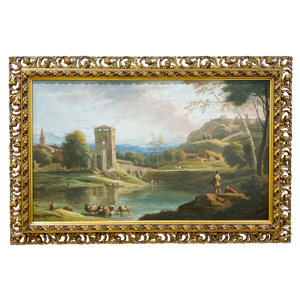Marco Ricci was born on 5 June 1676 in Belluno, was a landscape painter and engraver, son of Girolamo and nephew of Sebastiano. He was raised by his uncle in Venice; his violent nature forced him to move to Salato because of a fight, to then accompany his uncle to London and work with him. To this period date back various landscapes depicting the Dalmatian coasts and the Piave, of a Tizian style and mixed with fantastic schemes taken from romantic views of his immediate predecessors. In general, the works of the period are characterized by a dark or yellowish color (the most famous example is Cascata).
Later, the knowledge of Alessandro Magnasco gives life to a collection of scenes of marine storms, in very dark tones. There is so much resemblance between the paintings of the Venetian and those of the Genoese that sometimes attributing them to one of the two authors proves to be very difficult. The landscape masterpiece of the Miracle of Moses is evidence of the renewed collaboration between uncle and nephew, who, on returning to Venice from London, worked in closer relationship and collaboration. In the aforesaid work, Marco Ricci stands out figures of heroes against the light background given by the ruins. In his last period, the artist is the author of various tempera on parchment, which are now in Windsor Castle. Despite being predominantly a landscape artist, many caricatural portraits of dramatic actors remain. An example for the great Venetian painters of the eighteenth century, he died suicide in Venice on 21 January 1729.


 Text via WhatsApp
Text via WhatsApp